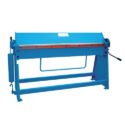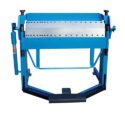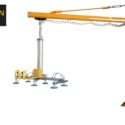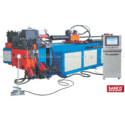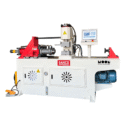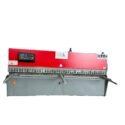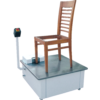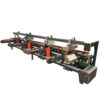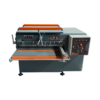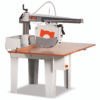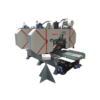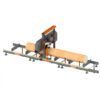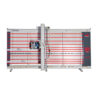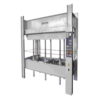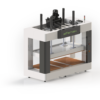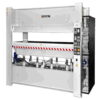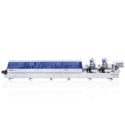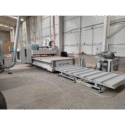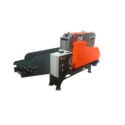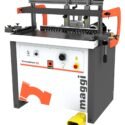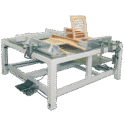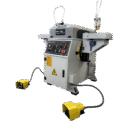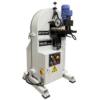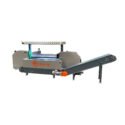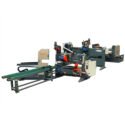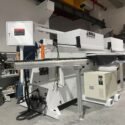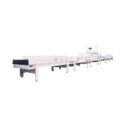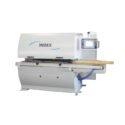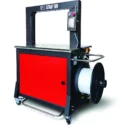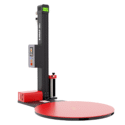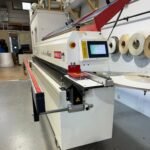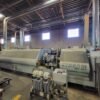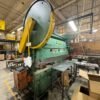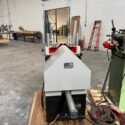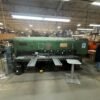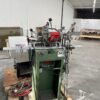
Woodworking is a hobby or professional career that requires using tools and machinery to create objects from wood. It’s a rewarding experience, but it also poses risks if safety precautions aren’t followed. Many woodworkers don’t end up with splinters from cuts and scrapes from accidental collisions. However, some have suffered more serious injuries as a result of not taking measures to prevent them. Woodworking safety is about preventing risks of getting injured while using sharp tools for cutting. Hazardous machines like table saws, volatile chemicals like finishes, and heavy objects such as logs or finished pieces. Even though it might seem obvious at times, not everyone realizes how crucial it is to follow certain rules before starting a project.
1. Set up your work area
Depending on what kind of projects you are working on, you might need a couple of saws, a drill press, a table saw, a jointer, a sander, a planer, etc. Having all of your tools and machines in one place will help you to avoid unnecessary accidents, particularly if you’re working in a tight space. Before you begin, check if all of your tools are in good working condition and that you have all the proper safety gear for using them. Your work area should be clear and well-lit, with no obstacles that could hinder your movements. You should also have a plan for dealing with any excess wood chips or dust, solvent spills, and other materials that might be harmful to your health. If you have minors in your household, make sure they have their own space and don’t interfere with your projects.
2. Operate the tools correctly
When you’re operating the tools, make sure that you are following the manufacturer’s instructions. Also, make sure that they are set up properly, and that you are using the right type of bits or blades for the job. Using a tool incorrectly can cause serious injuries like broken bones, lacerations, or even amputations. Never leave a machine running without supervision. And don’t stand in a position where you can’t see what the machine is doing. Make sure that your power tools are connected to a ground fault circuit interrupter (GFCI) outlet so that you don’t get electrocuted.
3. Make sure your tools are in good condition
This might seem obvious, but you’d be surprised how often woodworkers use dull or damaged blades for cutting or use a low-quality table saw that has a broken or faulty part. However, if the part is replaced or repaired properly, the tool is safe to use, but if it is not, the risk of an injury increases significantly. If you have doubts about a tool’s condition, don’t use it. Always use sharp blades, and change them as soon as they become dull. Dull blades can cause the machine to kick back, which can result in serious injuries. Also, don’t forget to inspect the condition of your blades, machine parts, and blades. If they are rusty, replace them.
4. Wear the right PPE
Every job is different, but certain types of clothing and PPE, like gloves, goggles, respirators, and hearing protectors, are standard for all woodworkers. Choose the right clothing for the project, and always wear your PPE. Check regularly for defects, and replace worn-out items as soon as possible. Gloves are a must-have for all woodworking projects that involve using sharp tools for cutting. They protect your hands from getting cut, and some even offer extra support and grip control. Goggles are a great thing to have when sanding wood or using any type of finish. They protect your eyes from getting contaminated by dust or small particles that could damage your eyes.
5. Don’t practice unsafe habits
Some people believe that they have to do everything as fast as possible to earn a profit. While it is true that being productive is important, it shouldn’t be done at any cost. Always remember to be cautious, and don’t use force when it isn’t necessary. Don’t rush through your work and attempt to finish everything in one day. If you don’t take your time and finish the job properly, you might end up with cuts and scrapes, or even cause an accident that could end up hurting someone else. Also, don’t wear loose clothing that could get caught in the machine’s moving parts. Remember to wear ear protection when using loud machines or when around others who are using machinery or working with loud tools.
Conclusion
Woodworking projects can be a fun way to relax and pass the time, or they can turn into a rewarding career. Regardless of the reason you choose to start woodworking, you have to ensure that you follow safety rules. The risks of getting injured while woodworking can be reduced by following the tips and advice in this article. Using sharp tools for cutting, operating machines correctly, making sure tools are in good condition, wearing the right PPE. And not practicing unsafe habits are just some of the things you can do to reduce the risk of getting injured when woodworking.






